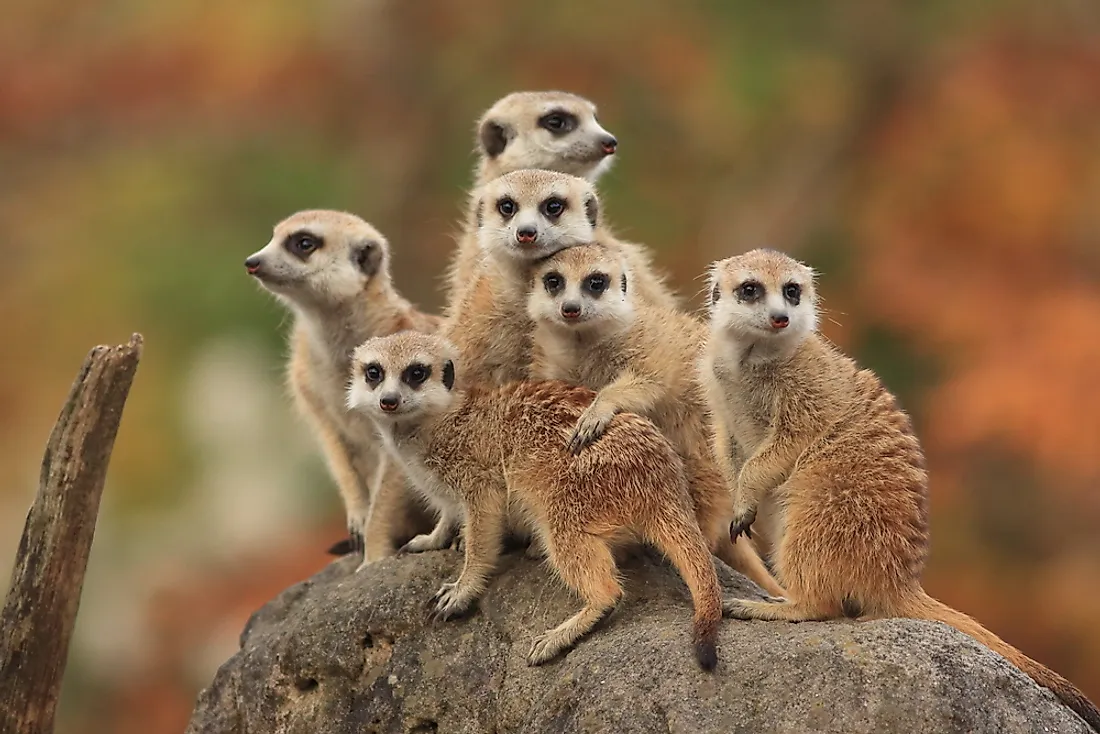Where do Meerkats Live?

A meerkat, also known as a curicate, is a member of the mongoose family that primarily inhabits the arid regions of southern Africa. It is the only surviving member of the genus Suricata. A group of meerkats is called either a "gang" or "mob" and often consists of approximately 20 meerkats, and is led by an adult male and female, referred to as the alpha pair. However, some gangs or mobs are larger and can contain up to 50 members. Meerkats are known for their social behavior and upright posture. Three three species of meerkat have been identified: South African meerkat, Desert meerkat, and Angolan meerkat. The name "meerkat" can be traced to the Afrikaans and Dutch languages, and relates to the words "monkey" and "lake cat."
Description of a Meerkat
Meerkats are generally small animals that weigh between 1.1 and 5.5 pounds. With long limbs and a slender body, meerkats measure 10 to 20 inches in length. They also have a tail that is approximately 9.8 inches long, which is slender and tapers to a reddish or black colored pointed tip. The tail is used primarily for balancing while standing upright, as well as signaling. Meerkats have a brown nose, eyes that are surrounded by black patches, and ears that are small, black, and crescent-shaped. The eyes are located in the front of the face, which gives binocular vision. A meerkat has claws at the end of each finger that are used for digging, burrowing, and sometimes for climbing trees. The body is covered in a gray, brown, or tan coat, with short parallel stripes across the back that extend from the base of the tail to the shoulder. The patterns of these stripes are unique to each meerkat. The underside is sparsely covered with hair and reveals black skin underneath.
Habitat and Conservation Status
Meerkats are adapted to living in desert conditions. The black patches around the eyes reduces the amount of sunlight that enters the eyes, which helps them look out for predators. They live in dry open land, savannas, and scrublands, and prefer areas with plenty of sandy soil where they can dig their burrows. These burrows consist of complex channels that lead to sleeping chambers. Their range extends from South Africa to Angola, and includes all parts of the Kalahari Desert, most parts of the Namib Desert, southwest Angola, and South Africa. Predators of meerkats include eagles, jackals, vultures, and occasionally snakes. Classified by the International Union Conservation of Nature (IUCN) as a species of "Least Concern," meerkats have been hunted and gassed out of their burrows because they are potential carriers of rabies. However, despite this hunting, the meerkat population has not been significantly reduced.
Diet
Meerkats are mainly insectivores, but also feed on other animals such as small mammals, spiders, scorpions, snakes, and lizards. They also eat plants and fungi, and are immune to certain venoms, including the strong venom of the Kalahari Desert scorpion. Meerkats forage as a gang with one "sentry" that is always on the look out for predators as others search for food. The sentry duty typically lasts one hour. Young meerkats do not forage until they are one month old.











